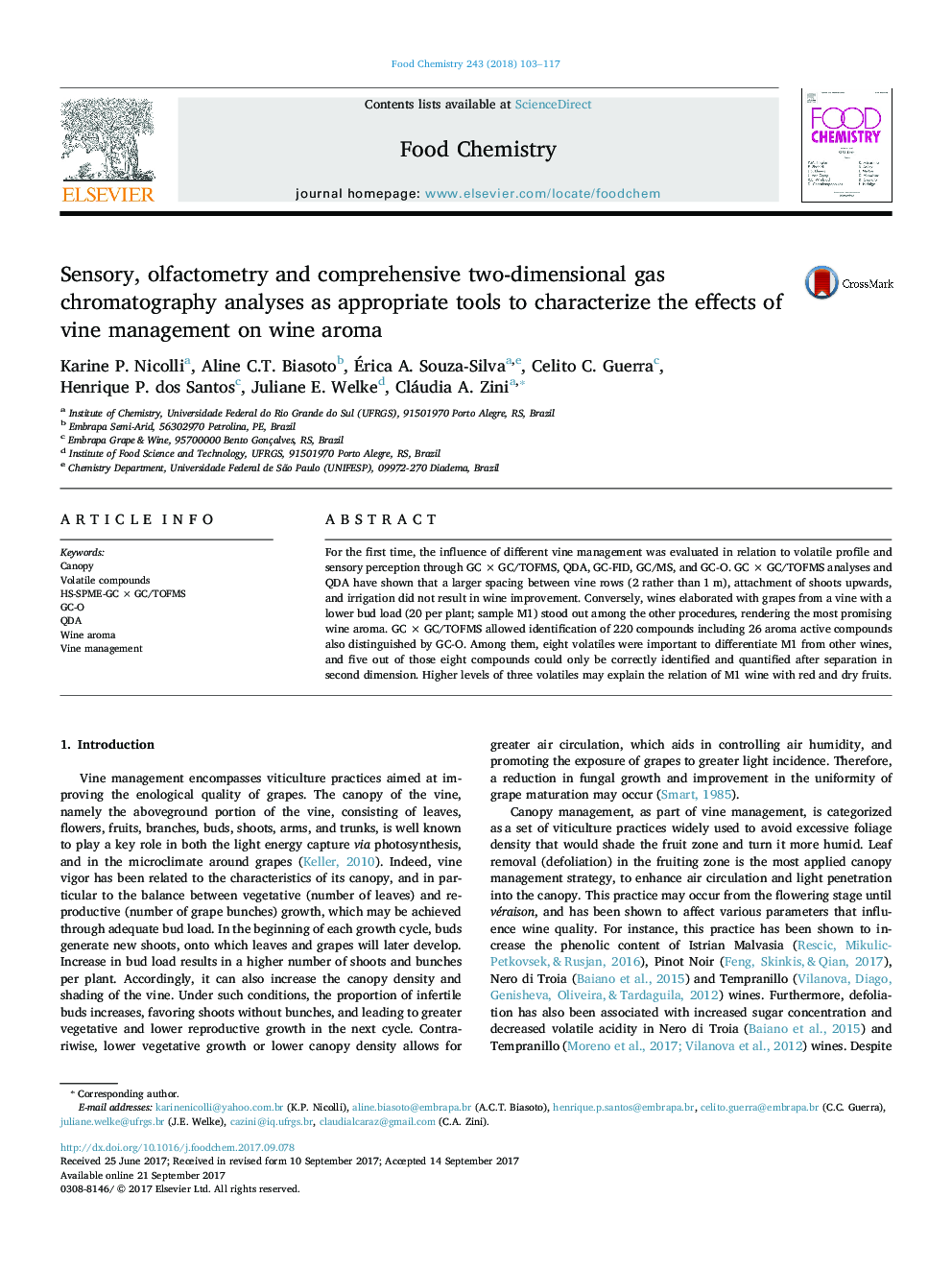| کد مقاله | کد نشریه | سال انتشار | مقاله انگلیسی | نسخه تمام متن |
|---|---|---|---|---|
| 5132535 | 1492049 | 2018 | 15 صفحه PDF | دانلود رایگان |

- Sensory and chromatographic techniques allowed improved vine management.
- 20 buds and 15 leaves was the most promising vine management for Merlot wine aroma.
- 1-Propanol, 2-phenylethyl acetate and two ethyl esters provided a better wine aroma.
- Identification/quantification of aroma compounds was only achieved with GCÂ ÃÂ GC/TOFMS.
For the first time, the influence of different vine management was evaluated in relation to volatile profile and sensory perception through GCÂ ÃÂ GC/TOFMS, QDA, GC-FID, GC/MS, and GC-O. GCÂ ÃÂ GC/TOFMS analyses and QDA have shown that a larger spacing between vine rows (2 rather than 1Â m), attachment of shoots upwards, and irrigation did not result in wine improvement. Conversely, wines elaborated with grapes from a vine with a lower bud load (20 per plant; sample M1) stood out among the other procedures, rendering the most promising wine aroma. GCÂ ÃÂ GC/TOFMS allowed identification of 220 compounds including 26 aroma active compounds also distinguished by GC-O. Among them, eight volatiles were important to differentiate M1 from other wines, and five out of those eight compounds could only be correctly identified and quantified after separation in second dimension. Higher levels of three volatiles may explain the relation of M1 wine with red and dry fruits.
Journal: Food Chemistry - Volume 243, 15 March 2018, Pages 103-117